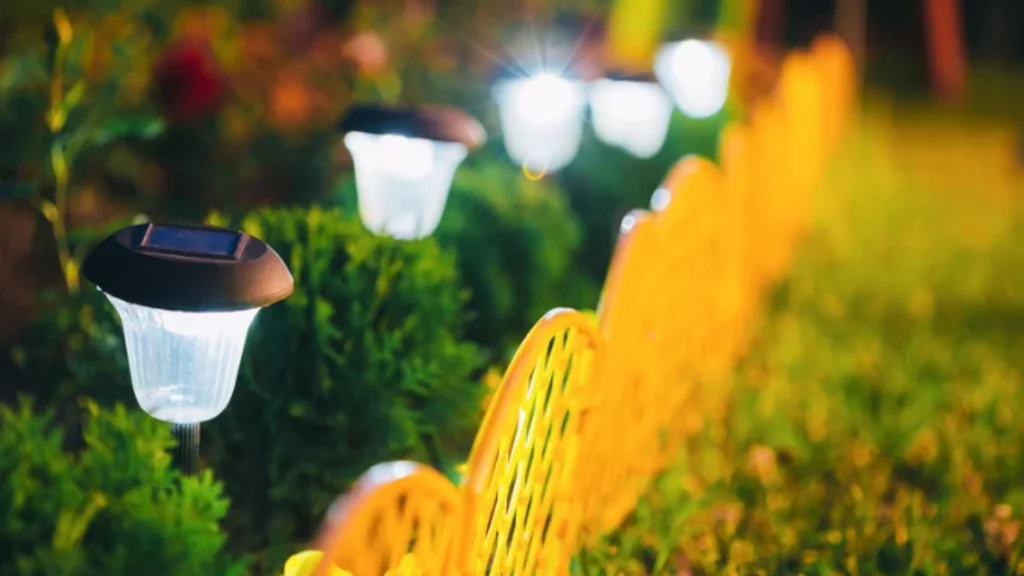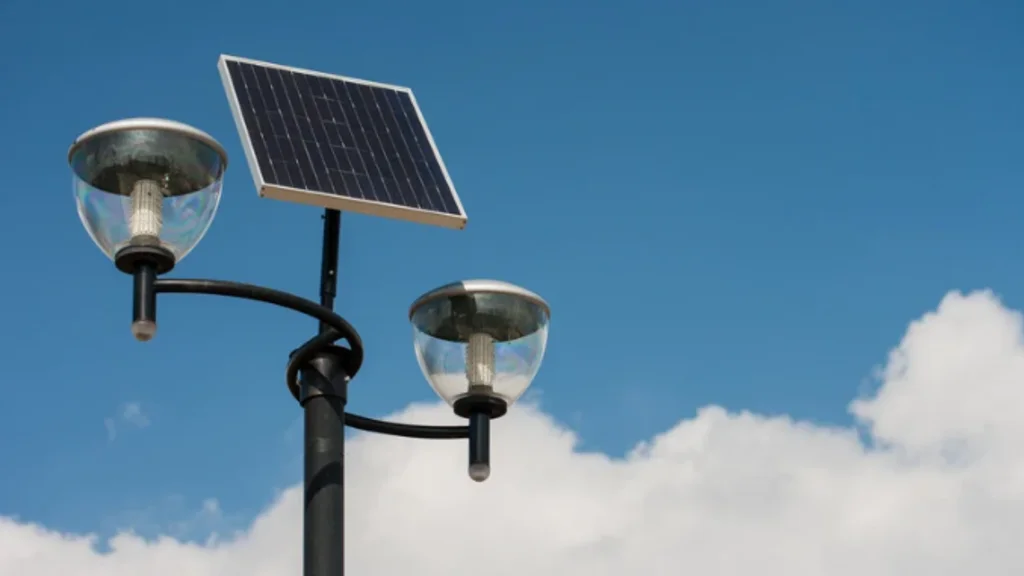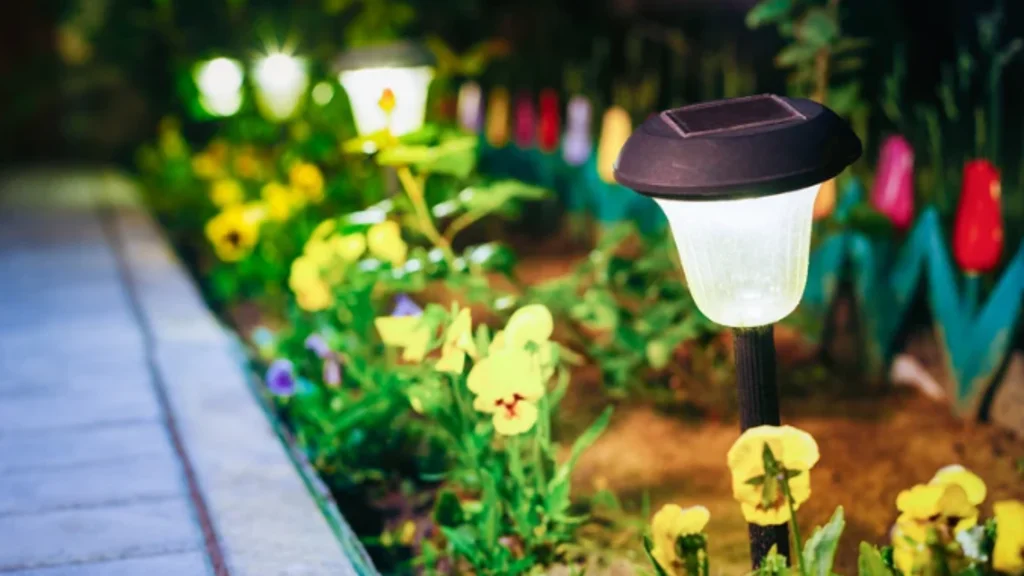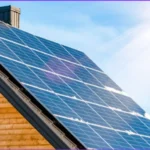Have you ever stepped into your backyard at dusk and thought, “I wish this space felt more inviting after dark”? You’re not alone, and there’s a bright, sustainable solution. Solar garden lights are revolutionizing how homeowners and small businesses illuminate their outdoor spaces. Whether it’s illuminating a winding path, spotlighting a feature tree, or adding a soft glow to patio dining, solar lighting does it all, without raising your electric bill.
But how do these lights actually work? What makes some better than others? And what should you know before installing them? This guide answers all those questions and more, based on real-world solar energy experience and industry insight.

What Are Solar Garden Lights and How Do They Work?
Solar lights use small photovoltaic (PV) panels to capture sunlight during the day and convert it into electricity, which is stored in a rechargeable battery. As night falls, a light sensor detects the drop in ambient light and automatically turns the LED bulbs on.
Main Components:
- Solar panel – Captures sunlight and converts it to electricity.
- Rechargeable battery – Typically lithium-ion or NiMH, stores energy.
- LED light – Energy-efficient bulbs that use stored power at night.
- Photoresistor (light sensor) – Detects when it’s dark enough to activate lighting.
- Housing and stake – The physical structure, often weather-resistant.
The system is entirely self-contained and operates off-grid, making it an eco-conscious choice for outdoor lighting.
Visit here: solar power ganerator.
Why Homeowners and Small Businesses Love Garden Lights
Solar garden lighting isn’t just about aesthetics—it’s also about sustainability, safety, and savings.
Benefits You’ll Actually Notice:
- No wiring needed – Easy to install with zero electrical knowledge.
- Zero energy cost – Runs entirely on free solar power.
- Eco-friendly – Reduces carbon footprint.
- Auto on/off – Hands-free convenience every evening.
- Low maintenance – Just clean the panel occasionally.
- Weatherproof options – Many models withstand rain, snow, and extreme temps.
Real-World Insight: I recently helped a client replace their aging halogen path lights with solar-powered LEDs. They were amazed to see how much brighter—and safer—their walkway became, all while eliminating over $90/year in electricity use.
Choosing the Right Solar Garden Lights: What to Look For
Not all solar lights are created equal. If you want your investment to last, here are key factors to evaluate.
Technical Specs That Matter:
- Panel quality: Monocrystalline panels are more efficient than polycrystalline.
- Battery capacity: Look for ≥1000mAh for dusk-to-dawn performance.
- Lumen output: Path lights (5–15 lumens), spotlights (100–300+ lumens).
- Build materials: Stainless steel and ABS plastic resist corrosion.
- IP rating: Opt for an IP rating of 65 or higher for enhanced weather resistance.
Pro Tip: Don’t ignore the battery type. Lithium-ion batteries outperform NiMH in cold climates and recharge faster, even on overcast days.

Common Issues and How to Fix Them
Just like rooftop panels, solar garden lights can lose efficiency due to dirt, weather, or battery wear. Here’s what to watch for:
Troubleshooting Checklist:
- Dimming or short runtime?
➤ Clean the solar panel (even dust can cut output by 20%)
➤ Replace the battery if older than 1.5–2 years
- Not turning on at night?
➤ Check placement—shaded areas reduce charging
➤ Confirm the light sensor isn’t obstructed
- Weak light after rain?
➤ Dry out moisture intrusion and reseal with waterproof silicone
Expert Advice: Just like with full-size panels, even light soiling can dramatically affect performance. One homeowner in Tucson lost nearly 18% output because a dust storm coated their garden lights. A simple microfiber cloth and water brought them back to full brightness.
Click here : How solar power works.
How Solar Lights Compare to Other Outdoor Lighting Options
| Feature | Garden Lights | Wired Outdoor Lights | Battery-Powered Lights |
| Installation Cost | Low | Medium to High | Low |
| Operating Cost | $0 (free solar) | High (electricity) | Moderate (batteries) |
| Maintenance | Low | Medium | Medium to High |
| Eco-Friendliness | High | Low | Medium |
| Lifespan | 2–5 years typical | 5–10 years | 1–2 years |
Bottom Line: If you want low-cost, low-maintenance lighting with eco appeal, solar is hard to beat.
Where to Use Garden Lights
There’s no shortage of creative, practical uses for solar lights. A few of my favorite applications include:
Use Cases:
- Garden pathways for safe nighttime navigation
- Deck and patio borders for subtle ambiance
- Driveway markers to improve visibility.
- Accent lighting for trees, sculptures, and fountains
- Pool or pond edges for aesthetic safety
Tip: Place lights 6–8 feet apart along walkways for balanced coverage and visual rhythm.

Real-World Maintenance Tips (From the Field)
After consulting with dozens of homeowners and solar installers, here are the most effective tips I’ve seen:
- Clean panels monthly – Use mild soap and a soft cloth.
- Check battery terminals – Corrosion is a common issue; clean with vinegar if needed.
- Rotate lights seasonally – Adjust angle or location for optimal sunlight as the sun’s path changes.
- Store in winter (if applicable) – In harsh climates, bring them in to extend life.
- Replace batteries every 1.5–2 years – Prevent dimming and extend full functionality.
The Environmental and Financial Impact
According to the U.S. Department of Energy, lighting accounts for about 15% of a household’s electricity use. Replacing just 10 wired outdoor lights with solar models can save over $100–$150 annually, depending on usage and local rates.
And it’s not just about money. One small business in Boulder, Colorado, reported a 6% drop in total emissions after switching all parking and landscaping lights to solar models. That’s a significant improvement for such a low-cost upgrade.
Final Thoughts: Are Solar Garden Lights Worth It?
If you’re looking for easy, affordable, and eco-conscious outdoor lighting, solar lights are a no-brainer. They’re more reliable than ever, incredibly easy to install, and offer a meaningful step toward energy independence.
Take Action: Brighten Your Nights the Smart Way
If your outdoor space feels dark, dated, or energy-draining, it’s time to upgrade. Start small—replace just a few key path lights with solar versions and notice the difference.
Pro Tip: If your garden lights haven’t been cleaned in over 3 months, you could be losing 10–20% of their output.
Schedule a solar lighting checkup today and make the most of every sun-powered watt.











